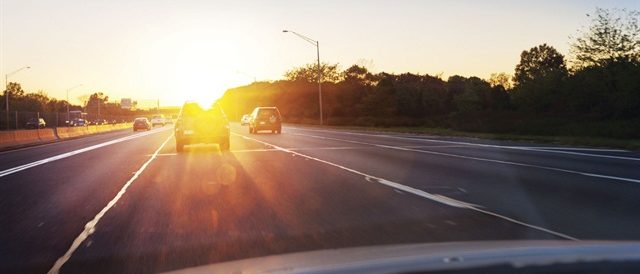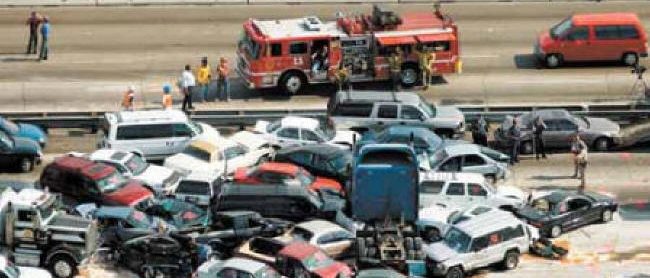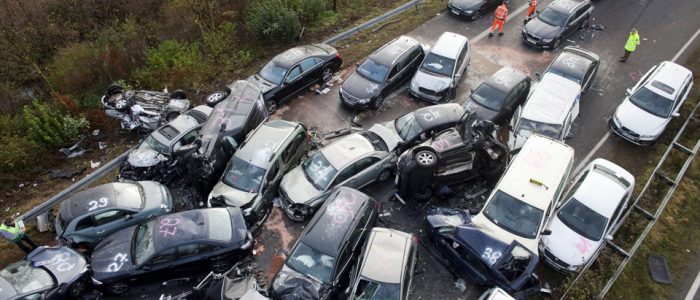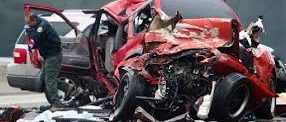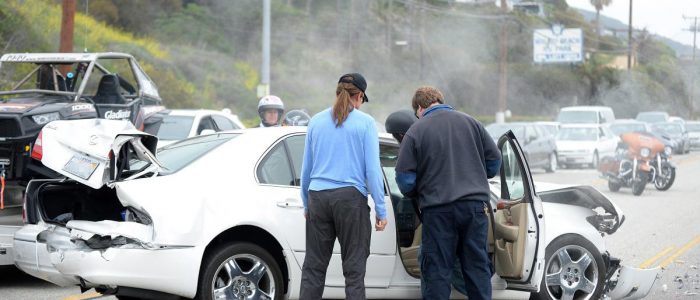FRONTAL GLARE
Frontal glare problem is unresolved up-to-date
In order to drive safely, you need to be alert and focused on everything around you. Unfortunately, drivers are increasingly becoming distracted and failing to keep their eyes on the road. An alarming number of distractions, both inside and outside of vehicles, has made distracted driving one of the major hazards associated with car accidents.
However, one dangerous distraction that you can’t control occurs on the outside of vehicles. That distraction is the dangerous glare of oncoming headlights or sun rays.
Problem of Glare
“Glare” is light which – instead of helping us to see – interferes with our vision or makes us uncomfortable.
Driving an automobile is primarily a visual task, and vision contributes as much as 90% of the information needed to drive (Alexander and Lunenfeld 1990) – (See – AAA foundation – report on Headlight Glare Countermeasures).
Ultraviolet light can reach the eye directly from the sun or from reflective surfaces such as water, snow, sand, and roads – light reflecting up can seriously impair vision.
Most people experience discomfort when driving during the day because of sunlight. A dark sunglass lens is a remedy to the bright sunlight. Driving towards the rising or setting sun can be especially uncomfortable, and has been the source of many accidents.
Recent medical literature has expressed concerns about the potential eye damage caused by long-term exposure to ultraviolet radiation.
According to Prevent Blindness America, the American Academy of Ophthalmology, and the American Optometry Association: “Ultraviolet radiation can play a contributory role in the development of various eye disorders including age-related cataract, pterygium (growth of tissue on the white eye), cancer of the skin around the eye, photokeratitis (sunburn of the cornea) and corneal degeneration. Cataracts are a major cause of visual impairment and blindness worldwide.” (See: www.specialtylens.com)
Frontal glare is a life-threatening hazard for car drivers. It leads to many unexplained car accidents causing death and injuries for drivers, passengers, pedestrians, bicyclists … Most of the accidents linked to the road conditions, sunset, sun onset…
- The view of the motorcycle or the other vehicle involved in the accident is limited by glare or obstructed by other vehicles in almost ½ of multiple vehicle accidents.
- Visibility and conspicuousness of the motorcycle is a critical factor in the multiple vehicle accidents, and accident involvement is significantly reduced by the use of motorcycle headlamps (on in daylight) and the wearing of high visibility yellow, orange or bright red jackets.
In the United States, glares play a part in nearly 3,000 accidents every year with drivers at risk of being temporarily ‘blinded’ by the dazzle of the sun on the windscreen. The AA report says that of the 2,905 accidents in which sun dazzle was reported to be a factor last year, 52 happened on motorways, 1,203 on A-roads, 428 on B-roads and 1,222 on other minor roads. — Edmund King, AA president
Polarized lenses are the best way to eliminate both glare and UV light. The SPD technology combines the advantage of photochromics and polarized glasses.
Eliminating glare has many advantages which include:
- Enhance drivers comfort
- Reduction of squinting that can cause eyestrain and tension.
- Increase Visual acuity
- Glare reduces your vision and at times can be extreme enough that you cannot see objects through it.
Sun Glare Factors
Sun glare can be a threat to drivers but there are a number of factors that lead to or increase the risk of the sun blinding or obscuring the view of a driver:
- Streets that run east to west
- Glare off the snow
- Dirty windshields
- Glare from behind driver bouncing off of signal lights
- Not wearing polarized sunglasses
- Light colored dashboards that render it more reflective
Drivers should be aware of the risk since it is rare for a motorist not to have experienced the blinding sun at any point while driving during the day. If it snowed or if the windshield is grimy or you neglect to wear sunglasses on a bright day, then the risk of colliding with someone or another vehicle is amplified.
MOTOR VEHICLE CRASHES
2016: According to data released by the National Safety Council (NSC), in 2016 there were more than 40,000 traffic fatalities in the U.S. for the first time in 10 years. The NSC statistics show a 6 percent increase in auto crash deaths in 2016, and a 3 percent rise in the number of miles Americans drove, compared with 2015. NSC estimates that the cost of deaths, injuries and property damage attributed to crashes in 2016 totaled $432.5 billion, up 12 percent from 2015. Nearly 4.6 million people required medical treatment after crashes, an increase of 7 percent over 2015.
|
Source: U.S. Department of Transportation, National Highway Traffic Safety Administration.
Table: US, Motor Vehicle Crashes, 2006-2015
According to the National Highway Traffic Safety Administration, vehicle occupants accounted for 66 percent of traffic deaths in 2015. Motorcycle riders accounted for 14 percent. Pedestrians accounted for another 15 percent; pedalcyclists, bus and other nonoccupants accounted for the remainder.
To learn more:
- By Ray Massey for the Daily Mail – Glare contributes to 3,000 accidents and is particularly dangerous at this time of year
- by Timothy P. Houten, May 15, 2015 – The Hidden Dangers of Sun Glare and Car Accidents –
- See AAA Foundation for Traffic Safety, “Request for Proposals, Headlight Glare countermeasures,” March 6, 1999; See also Automobile Dealers Association of Mega Milwaukee, “How to reduce sun glare,” February, 1999.


